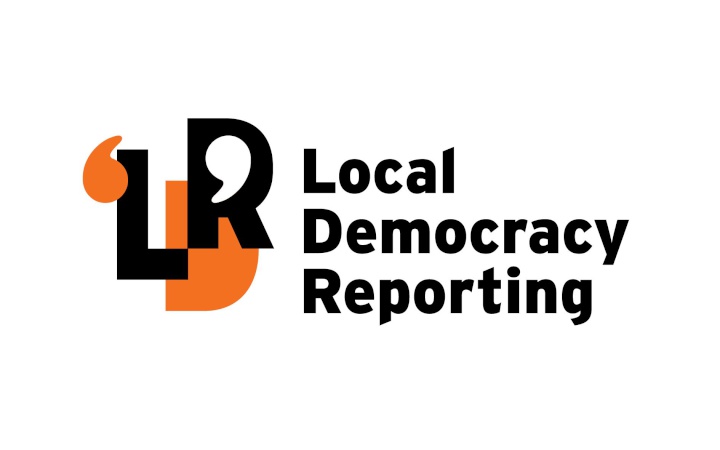A new group opposing South Taranaki seabed mining wants voters to use local elections to embolden councillors against would-be miners.
Around 300 people met at Ōpunakē Beach on the weekend as Protect Our Moana Taranaki swung the focus of seabed mining opposition 70 kilometres along the coast, following years of protest at Pātea.
Surfboards spelled-out ‘no seabed mining’ on the black sand before more than 120 surfers paddled out to link up in a circle on Saturday morning.
Trans-Tasman Resources has approval to vacuum up 50 million tonnes of the South Taranaki seabed every year for 35 years to extract iron, vanadium and titanium.
But the company still needs consent to discharge 45 million tonnes of unwanted sediment back into the shallow waters off Pātea each year – 160,000 tonnes daily of a recognised pollutant.
After a decade failing to win a discharge consent through the courts, Trans-Tasman a year ago quit the latest environment hearing, to seek instead permission under the pro-development Fast-track Approvals Act.
Protect Our Moana Taranaki co-leader Fiona Young highlighted a petition calling for councils and councillors across Taranaki, Whanganui and Manawatu to oppose Trans-Tasman’s plans.
“This being a local election year, it's a very important time to bring this message to the forefront and let people know what you care about.”
Young hoped the petition would help bring a collective voice for Taranaki-Whanganui-Manawatu, “to embolden our councils to step up and oppose seabed mining.”
Opponents fear the mine’s sediment would smother reefs and cut sunlight levels, stunting marine photosynthesis.
Alan Eggers is executive chairman of Trans-Tasman Resources and executive director of the company’s new owners, Australian gold and silver miners Manuka Resources.
He said the mining ship’s discharge would be harmless.
“De-ored sands will be returned immediately to the seafloor in a controlled process to minimise the generation of suspended sediment in the water (a plume)… the plume generated is localised.”
Eggers said high sediment concentrations wouldn’t bother the local marine ecology.
“The area is very exposed with high energy, turbid sea, subject to frequent disturbances from current, wave, tidal, storm events and flooded river inputs that generate high suspended sediment concentrations.”
Local Marilyn Phillips said she didn’t trust such reassurances
“There's absolutely no guarantees.”
“We're keen swimmers and fishermen and we really don't want to see our coast destroyed and our ocean destroyed,” she said.
Her scuba-diving husband has “always talked about what's under the water… it's teaming with life.”
“Once it's gone, it's gone, you don't get it back. It's really alarming.”
Jeremey Wheeler also doubted the miners’ safety claims.
“They seem quite empty in what they're saying. Cheap, cheap statements.”
“The whole thing's pretty terrible. The way it's going to impact on the reefs and that, with the constant flow of debris from this mining.”
Teenaged Eleni Wheeler found it “quite scary”.
“Knowing our moana and the life around it and what it does for our Earth – how it affects people.”
Kiwi's Against Seabed Mining’s former chair Phil McCabe said there's similar opposition across Taranaki and Whanganui.
“We're coastal people, we have relationship, we have a love for the marine environment."
McCabe said the shallow waters of the Pātea Shoals extend further than anywhere else on New Zealand's coastline creating a “unique and extraordinary” place.
South Taranaki had the world’s greatest diversity of ocean mammals – equalled only by a small area off Argentina, he said.
“More different types of marine mammals exist in or transit through the South Taranaki Bight than any other ocean space on the planet.”
Manuka Resources expects to earn US$312 million a year before tax, giving shareholders a near 40 percent rate of return on investment of US$602 million.
The company has promised a huge economic boost in Taranaki and Whanganui, creating 1350 jobs across New Zealand and becoming one of the country’s top export earners.
Last June, South Taranaki District Council called for a ban on seabed mining, telling a parliamentary inquiry any economic benefits wouldn’t outweigh "environmental vandalism”.
In December, neighbouring Whanganui District Council also voted to oppose what Councillor Charlotte Melser called the “boom and bust industry, one that leaves devastation behind it.”
Visiting Green MP Teanau Tuiono said coastal communities know and feel the wairua and mauri of their oceans.
“When I got here, I could really feel the aroha of the people for this place, the deep connections that people have, the multiple different connections. It's clearly obvious.”
Te Pāti Māori co-leader Debbie Ngarewa-Packer was fighting Trans-Tasman Resources long before she became MP for Te Tai Hauāuru.
“We've always been told how to do rāhui, how to keep things and bring them back – but we've never been taught by our tūpuna how to bring a dead ocean back to life.
“Obviously we'll go out and protest on boats and do what we have to do to interfere with it.”
“But the reality is once the damage starts, how do you stop a 35-year permit?”
LDR is local body journalism co-funded by RNZ and NZ on Air



 Gordon Campbell: On Our Austerity Fixation And Canada Staying Centre-left
Gordon Campbell: On Our Austerity Fixation And Canada Staying Centre-left People Against Prisons Aotearoa: Voting Ban “Undermines Democratic Principles” Says Justice Group
People Against Prisons Aotearoa: Voting Ban “Undermines Democratic Principles” Says Justice Group Taxpayers' Union: Nationwide Hīkoi Calling For Balanced Budgets
Taxpayers' Union: Nationwide Hīkoi Calling For Balanced Budgets Greenpeace: Luxon’s War On Nature Opens Gate For More Dairy Conversion
Greenpeace: Luxon’s War On Nature Opens Gate For More Dairy Conversion NZ Labour Party: Consenting Change Opens Door For Cowboys
NZ Labour Party: Consenting Change Opens Door For Cowboys New Zealand Government: Accelerating The Roll-Out Of Public EV Chargers
New Zealand Government: Accelerating The Roll-Out Of Public EV Chargers Save the City-to-Sea Bridge: Join on Sunday afternoon to save Wellington’s City-to-Sea Bridge
Save the City-to-Sea Bridge: Join on Sunday afternoon to save Wellington’s City-to-Sea Bridge


